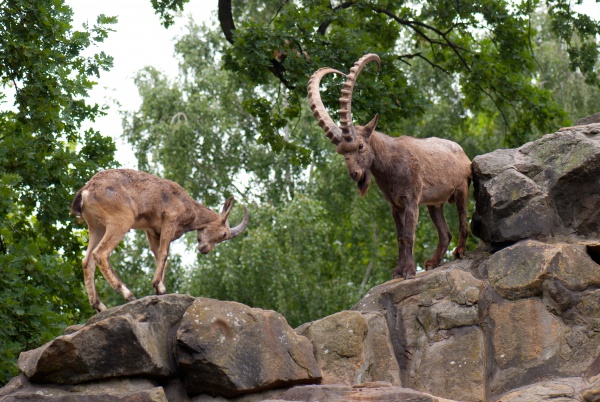Facts About Siberian (Himalayan) Ibex
The Siberian ibex, also known as the Altai ibex or Gobi ibex, is a majestic species native to Central Asia. It is the largest and heaviest member of the Capra genus, although its shoulder height is slightly less than that of the markhor. Male Siberian ibexes stand about 88-110 cm tall at the shoulder and weigh between 60-130 kg, while the females are smaller. Both sexes possess distinctive features such as beards and scent glands. The males bear larger, black horns, whereas the females have smaller, gray-brown horns.
These ibexes exhibit a range of coat colors, from dark brown to light tan, with males displaying darker coats during winter. Various subspecies exist, differentiated by size, horn dimensions, and coat color. The mating season, or rutting season, runs from late October to early January. During this period, males engage in courtship rituals and compete for females. Following a gestation period of 170-180 days, females typically give birth to a single kid.
Siberian ibexes inhabit high elevations above the tree line, where they feed on alpine grasses, herbs, and tree foliage. Their natural predators include wolves, snow leopards, and brown bears. They thrive in regions with steep slopes, rocky scree, alpine meadows, and even semi-deserts, across Central Asia, Russia, Mongolia, China, and parts of India and Pakistan.
These ibexes spend their days grazing and often form herds of varying sizes, which enlarge during the rutting season. To cope with winter, they descend to lower slopes in search of food. Their habitats range from high-altitude tundra to sparsely forested slopes. In captivity, Siberian ibexes can live up to 22 years and reach sexual maturity at different ages, with males maturing later than females.

 Kyrgyzstan
Kyrgyzstan